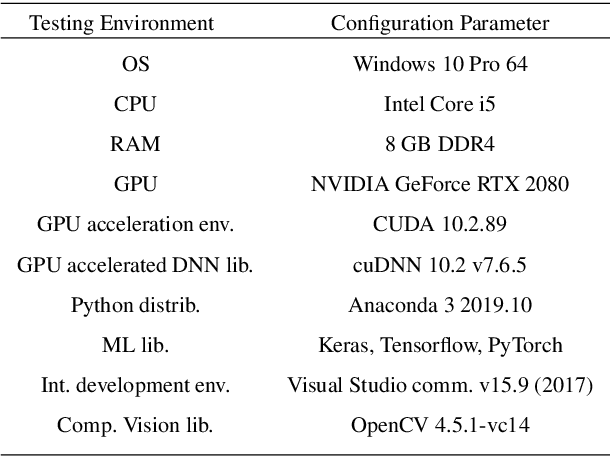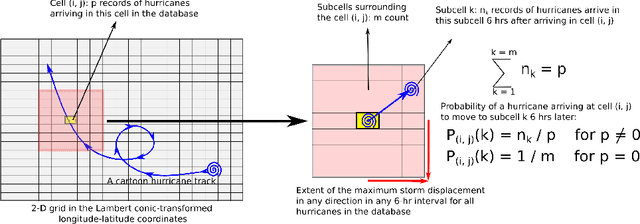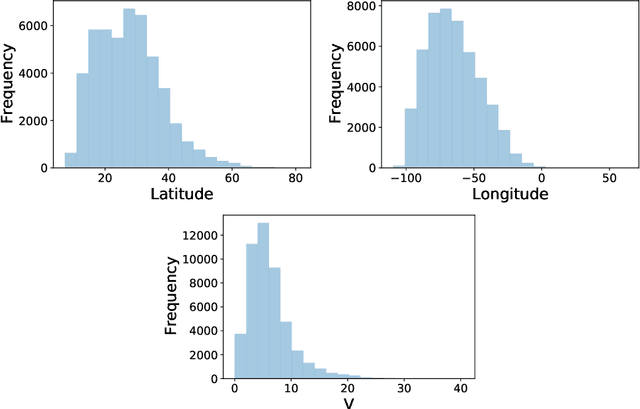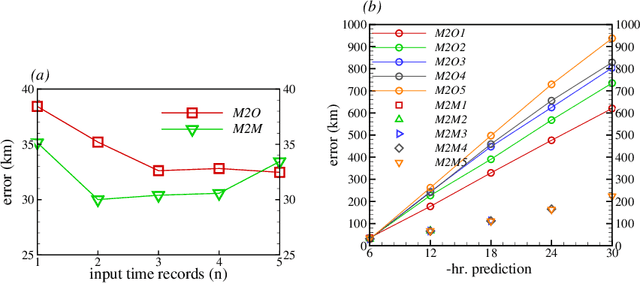Rikhi Bose
Accurate deep learning sub-grid scale models for large eddy simulations
Jul 19, 2023Abstract:We present two families of sub-grid scale (SGS) turbulence models developed for large-eddy simulation (LES) purposes. Their development required the formulation of physics-informed robust and efficient Deep Learning (DL) algorithms which, unlike state-of-the-art analytical modeling techniques can produce high-order complex non-linear relations between inputs and outputs. Explicit filtering of data from direct simulations of the canonical channel flow at two friction Reynolds numbers $Re_\tau\approx 395$ and 590 provided accurate data for training and testing. The two sets of models use different network architectures. One of the architectures uses tensor basis neural networks (TBNN) and embeds the simplified analytical model form of the general effective-viscosity hypothesis, thus incorporating the Galilean, rotational and reflectional invariances. The other architecture is that of a relatively simple network, that is able to incorporate the Galilean invariance only. However, this simpler architecture has better feature extraction capacity owing to its ability to establish relations between and extract information from cross-components of the integrity basis tensors and the SGS stresses. Both sets of models are used to predict the SGS stresses for feature datasets generated with different filter widths, and at different Reynolds numbers. It is shown that due to the simpler model's better feature learning capabilities, it outperforms the invariance embedded model in statistical performance metrics. In a priori tests, both sets of models provide similar levels of dissipation and backscatter. Based on the test results, both sets of models should be usable in a posteriori actual LESs.
Physics-aware deep learning framework for linear elasticity
Feb 19, 2023



Abstract:The paper presents an efficient and robust data-driven deep learning (DL) computational framework developed for linear continuum elasticity problems. The methodology is based on the fundamentals of the Physics Informed Neural Networks (PINNs). For an accurate representation of the field variables, a multi-objective loss function is proposed. It consists of terms corresponding to the residual of the governing partial differential equations (PDE), constitutive relations derived from the governing physics, various boundary conditions, and data-driven physical knowledge fitting terms across randomly selected collocation points in the problem domain. To this end, multiple densely connected independent artificial neural networks (ANNs), each approximating a field variable, are trained to obtain accurate solutions. Several benchmark problems including the Airy solution to elasticity and the Kirchhoff-Love plate problem are solved. Performance in terms of accuracy and robustness illustrates the superiority of the current framework showing excellent agreement with analytical solutions. The present work combines the benefits of the classical methods depending on the physical information available in analytical relations with the superior capabilities of the DL techniques in the data-driven construction of lightweight, yet accurate and robust neural networks. The models developed herein can significantly boost computational speed using minimal network parameters with easy adaptability in different computational platforms.
A fast accurate fine-grain object detection model based on YOLOv4 deep neural network
Oct 30, 2021



Abstract:Early identification and prevention of various plant diseases in commercial farms and orchards is a key feature of precision agriculture technology. This paper presents a high-performance real-time fine-grain object detection framework that addresses several obstacles in plant disease detection that hinder the performance of traditional methods, such as, dense distribution, irregular morphology, multi-scale object classes, textural similarity, etc. The proposed model is built on an improved version of the You Only Look Once (YOLOv4) algorithm. The modified network architecture maximizes both detection accuracy and speed by including the DenseNet in the back-bone to optimize feature transfer and reuse, two new residual blocks in the backbone and neck enhance feature extraction and reduce computing cost; the Spatial Pyramid Pooling (SPP) enhances receptive field, and a modified Path Aggregation Network (PANet) preserves fine-grain localized information and improve feature fusion. Additionally, the use of the Hard-Swish function as the primary activation improved the model's accuracy due to better nonlinear feature extraction. The proposed model is tested in detecting four different diseases in tomato plants under various challenging environments. The model outperforms the existing state-of-the-art detection models in detection accuracy and speed. At a detection rate of 70.19 FPS, the proposed model obtained a precision value of $90.33 \%$, F1-score of $93.64 \%$, and a mean average precision ($mAP$) value of $96.29 \%$. Current work provides an effective and efficient method for detecting different plant diseases in complex scenarios that can be extended to different fruit and crop detection, generic disease detection, and various automated agricultural detection processes.
Data-Based Models for Hurricane Evolution Prediction: A Deep Learning Approach
Oct 30, 2021



Abstract:Fast and accurate prediction of hurricane evolution from genesis onwards is needed to reduce loss of life and enhance community resilience. In this work, a novel model development methodology for predicting storm trajectory is proposed based on two classes of Recurrent Neural Networks (RNNs). The RNN models are trained on input features available in or derived from the HURDAT2 North Atlantic hurricane database maintained by the National Hurricane Center (NHC). The models use probabilities of storms passing through any location, computed from historical data. A detailed analysis of model forecasting error shows that Many-To-One prediction models are less accurate than Many-To-Many models owing to compounded error accumulation, with the exception of $6-hr$ predictions, for which the two types of model perform comparably. Application to 75 or more test storms in the North Atlantic basin showed that, for short-term forecasting up to 12 hours, the Many-to-Many RNN storm trajectory prediction models presented herein are significantly faster than ensemble models used by the NHC, while leading to errors of comparable magnitude.
 Add to Chrome
Add to Chrome Add to Firefox
Add to Firefox Add to Edge
Add to Edge